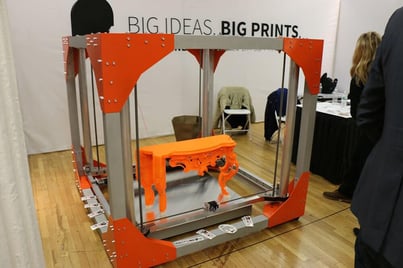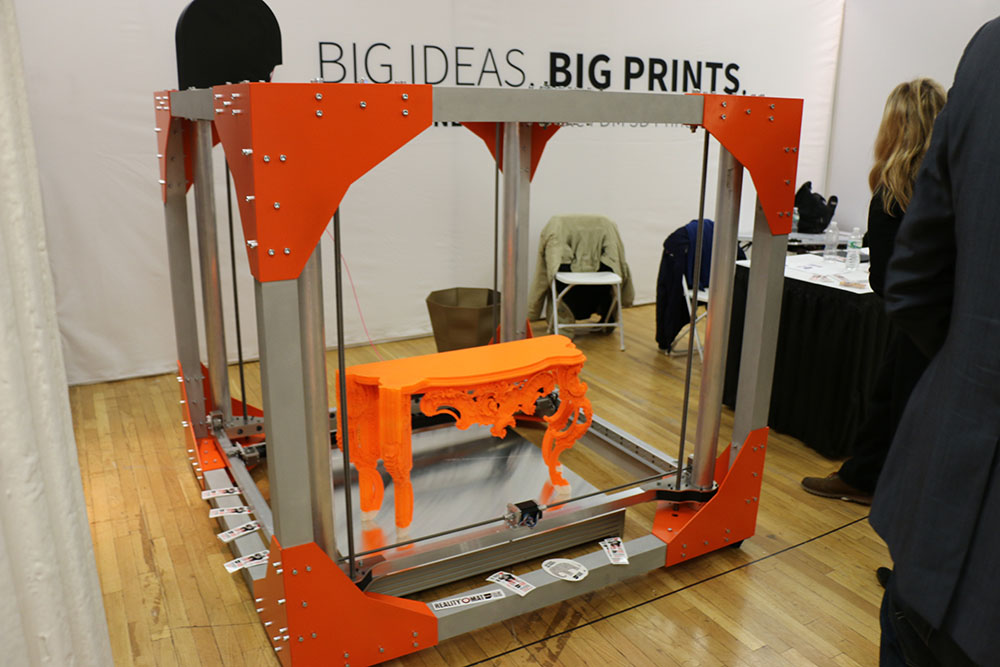If you’re not using a 3D printer in your manufacturing process yet, odds are you soon will be.
According to the Semiannual 3D Printing Spending Guide released earlier this year, the 3D printing industry is going to expand rapidly in the next three years.
The Guide predicts that 3D printing will expand globally at a 27% compound annual growth rate and that the nearly $11 billion industry in 2015 will balloon to $26.7 billion by 2019. (Source: IDC)
The continuing growth of this technology is helping contract manufacturers with something that is very near and dear to our hearts: speeding the process of prototyping and designing — and, in the case of 3D printing, increasing production.
Even with prices trending down, if you are going to invest in an industrial-grade 3D printer, it’s sti ll going to cost you a pretty penny. So, what are the real benefits of using a 3D printer in your job shop?
ll going to cost you a pretty penny. So, what are the real benefits of using a 3D printer in your job shop?
Here’s a look at some:
-
Save Time: 3D printing allows ideas to develop faster than ever. Being able to 3D print a design the day you came up with it — or made a significant change — can cut your overall development time way down and helps you stay a step ahead of the competition.
-
Save Money: The costs of prototyping production runs and injection molds are prohibitive. The 3D printing process allows you to create parts and assemblies through additive manufacturing for far less than traditional machining.
-
Reduce Risk: On paper (well on screen) a design seems sound. Of course, until it’s an actual prototype or product you never know. Being able to verify a design before spending on production can make a difference to your bottom line. Moreover, if it isn’t quite right the first time, you can fix the geometry and print another prototype far more cheaply than altering an existing mold. Direct CAD allows you to easily make new iterations to your model and reprint, working well with additive manufacturing. History-based models, on the other hand, may need so much rework to get it right you might have to model all over again.
-
Clear Communications: Describing the product you are going to deliver to your customer leaves a lot to the imagination and may be misinterpreted. A 3D design is better than using your imagination, allowing them to hold the tangible product-to-be not only makes it more “real,” it reduces ambiguity when discussing design and changes.
-
Reduce Constraints: The limitations of standard machining have constrained product design for years, and as you know we hate constraints and other factors that limit your design. With the improvements in additive manufacturing, the possibilities are endless. Today’s additive manufacturing is much more tolerant of creative geometry than in years past. Direct modeling has no constraints other than the fact that if it’s impossible to build the model geometrically, it won’t let you do it. Some history-based modelers will allow you to build models on the screen that physically cannot be made.
-
You’ll Fail Better: If you’ve ever played with a 3D model, you know how important getting the construction geometry correct is. If your construction geometry isn’t sound your model may look like the Leaning Tower of Pisa. But the truth is your designs don’t always work. Don’t feel bad, we all have issues that need to be reworked when creating something. In fact, his blog has been reworked multiple times. Being able to see what doesn’t work quickly and cheaply with a 3D printer allows you to hit fewer dead-ends and make more breakthroughs earlier in the process.
There you have it, a few benefits of using a 3D printer in your manufacturing process, many of which fit well with Direct CAD for designing.
Of course, though, no technology is without pitfalls. Manufacturers run into them all the time with 3D printing. From choosing the right materials to designing with additive manufacturing in mind, manufacturers are learning something new every day to make the most of 3D printing. In fact, we’ll be hosting a webinar next month that will show you hacks to overcome some of the most common 3D printer obstacles manufacturers face today.
Watch our '3D Printing Hacks Using Direct CAD' recorded video here

